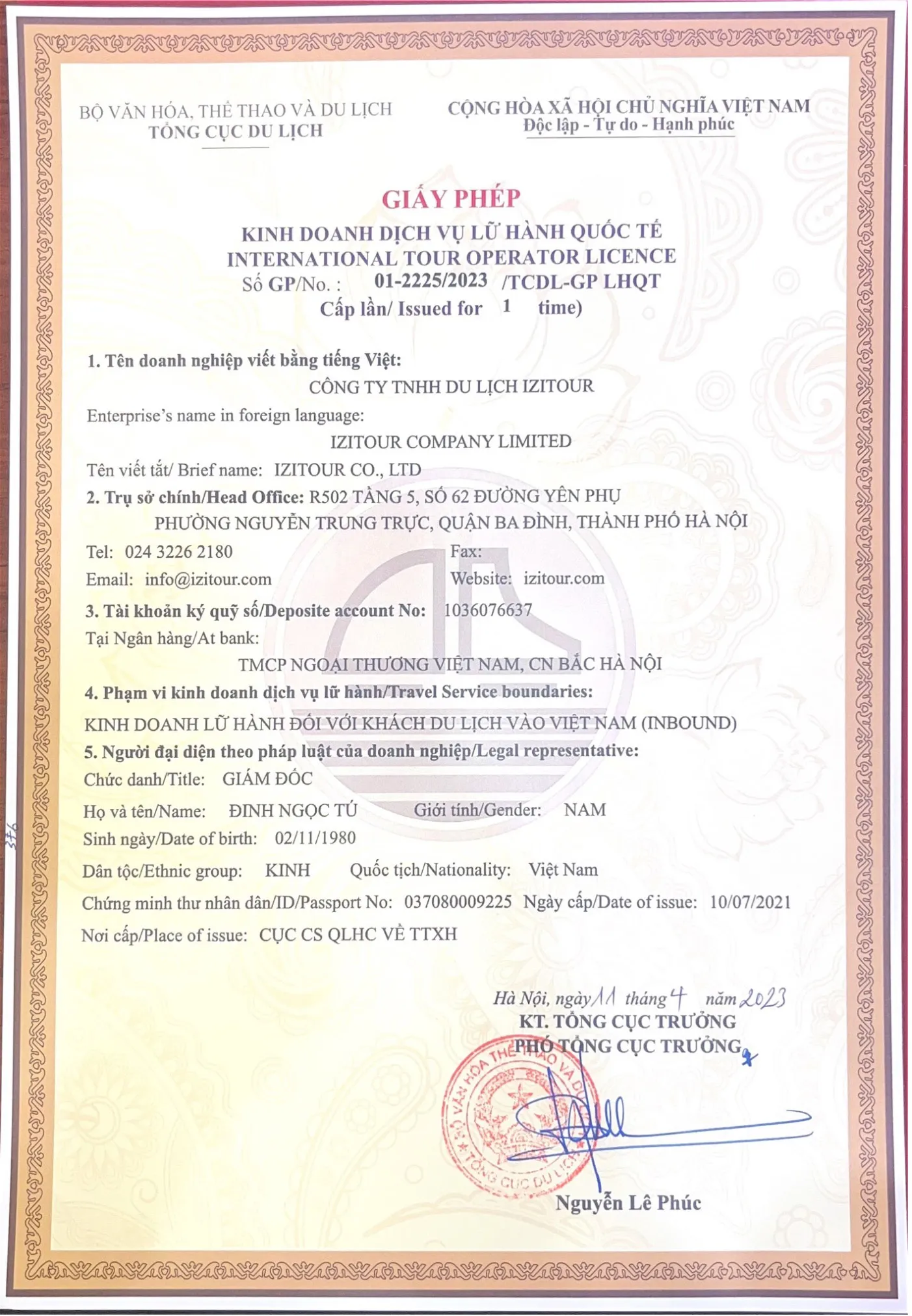Beyond the temples of Luang Prabang and the peaceful Mekong villages, Laos reveals a wilder, more captivating side: its waterfalls. Nestled deep within the jungle, they form natural emerald-coloured pools, misty water veils, and landscapes still untouched by mass tourism. Here, time seems to slow down, between refreshing swims, secret trails, and the echoes of nature. If you dream of an authentic, poetic, and cooling Laos experience, here are the most beautiful Laos waterfalls that you absolutely must discover.
- 1. Kuang Si Falls – The crown jewel of Luang Prabang
- 2. Khone Phapheng Falls – The "Niagara of the Mekong"
- 3. Tad Somphamit Falls (Li Phi Falls)
- 4. Tad Yuang Falls – The wild bolovens plateau cascade
- 5. Tad Fane Twin Falls – Vertical marvel of the bolovens plateau
- 6. Sae Pong Lai Falls – The mystical cascade of attapeu's edge
- 7. Tad Lo Falls – Simple charm of the bolovens plateau
- 8. Tad Thong Falls – Luang Prabang's secret getaway
- 9. Tad Sae Falls – The tranquil terraced pools
- 10. Tad Pha Suam Falls – The terrace waterfall and cultural stop
- 11. Nam Kat Falls – Ecotourism and forest adventure
- 12. Tad Champee Falls – Paksong's hidden gem
- Practical tips for visiting Laos waterfalls
1. Kuang Si Falls – The crown jewel of Luang Prabang
Located about 30 km south of the former royal capital of Luang Prabang, Kuang Si Falls, known locally as Tat Kuang Si, are considered Laos’s most iconic natural symbol. With their turquoise waters cascading over 60 metres through the heart of the jungle, they offer a breathtaking, almost unreal spectacle. At the base of the main waterfall, a succession of emerald-coloured natural pools invites travellers to swim and relax in a fresh and peaceful atmosphere.
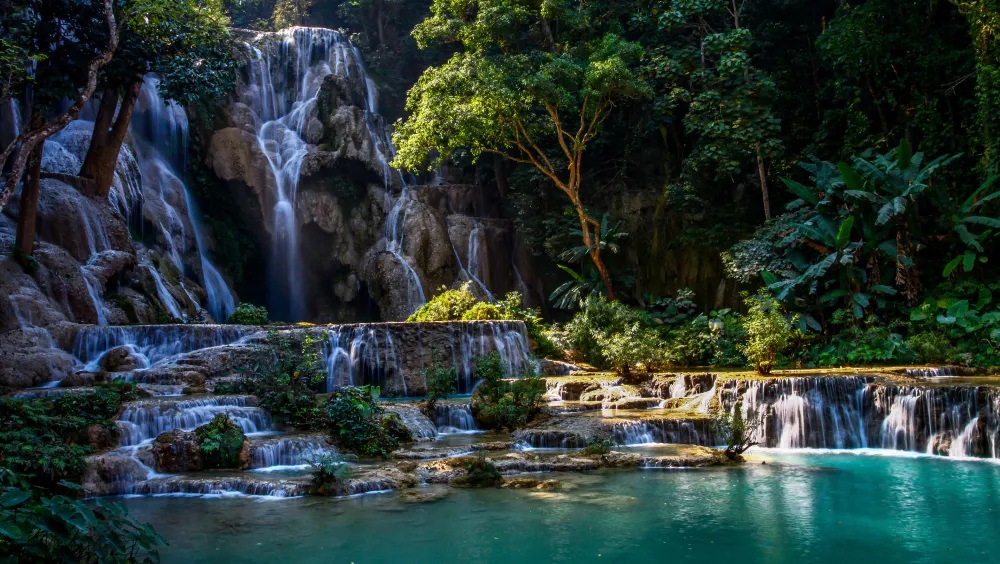
According to an ancient Lao story, a sage dug the earth (Si) to channel the water of the Nam Xi River and make the land fertile. A deer (Kuang) then came to drink there, marking the place with a sacred energy. This is how the name Tat Kuang Si—"the waterfall of the deer and the dug earth"—was born, adding a touch of mystery to this already enchanting site.
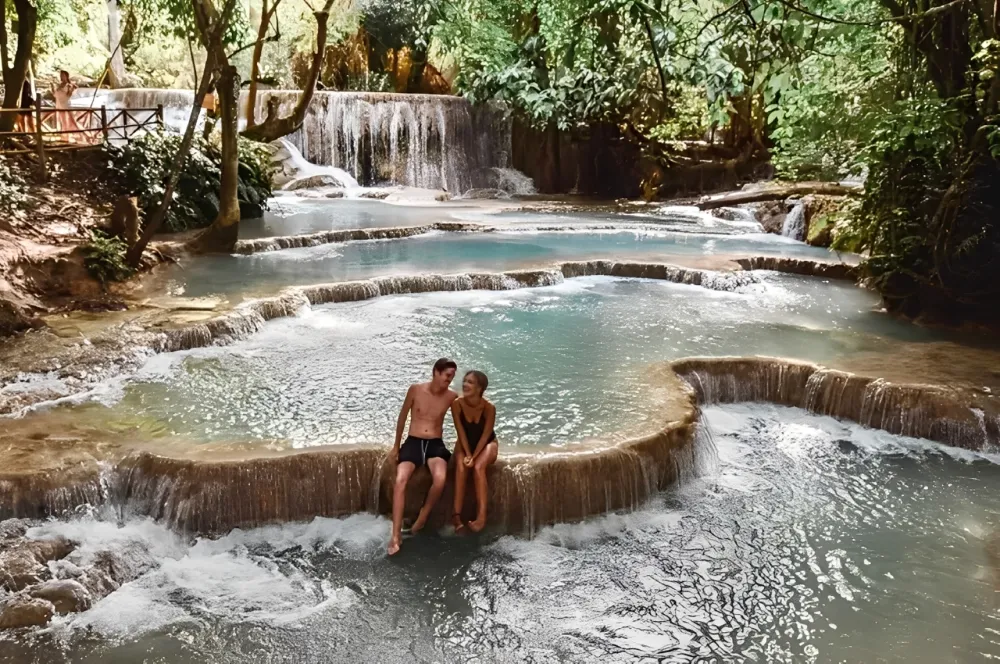
Things to do at Kuang Si Falls?
- The visit is not limited to admiring the cascade; it's a truly refreshing interlude in the heart of the jungle.
- Swim in the Turquoise Pools: The water is cool and crystal clear—perfect for relaxing after a walk.
- Kayak to Hidden Caves: Kayaks can be rented to explore the river peacefully.
- Climb to the Top of the Waterfall: A small trail leads to the top of the falls for a spectacular view of the forest.
- Enjoy a Picnic in Nature: The surroundings are perfect for a break in the middle of the forest, to the sound of the water and away from the hustle and bustle of Luang Prabang.
2. Khone Phapheng Falls – The "Niagara of the Mekong"
Located in the Champasak province, near the Cambodian border, Khone Phapheng Falls are considered the most powerful waterfalls in Southeast Asia. Nicknamed the "Little Niagara," they stretch nearly 21 km along the great Mekong River, forming a succession of spectacular rapids and cascades.
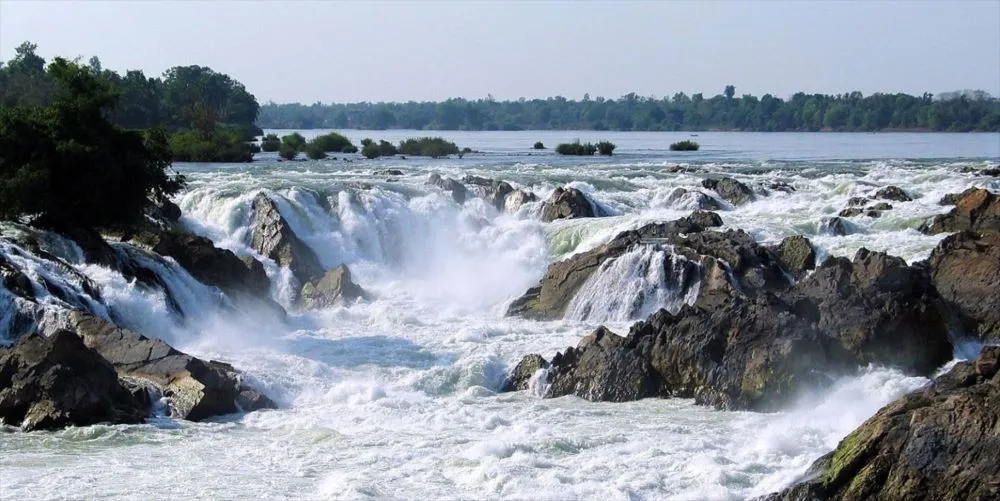
Here, the water does not fall at a single point but deploys into multiple foamy torrents, sculpting the landscape with an impressive roar. The Mekong then divides into a mosaic of channels and rocky islets—the mythical Si Phan Don region, "the Land of Four Thousand Islands"—forming a natural labyrinth of hypnotic power. The whiteness of the moving water contrasts magnificently with the deep green of the surrounding jungle, offering a wild and magnificent panorama that few travellers forget.
The most magical time to contemplate Khone Phapheng is at sunrise or late afternoon. At these times, the golden rays of the sun caress the water's surface, revealing subtle rainbows in the mist. When the Mekong crashes against the immense blocks of stone, a veil of white mist rises into the air, giving rise to its poetic nickname: the "Waterfall of the Mist." Facing this wild power, the visitor instantly feels how small humanity is before the grandeur of nature.
3. Tad Somphamit Falls (Li Phi Falls)
Located in the heart of the mythical Si Phan Don region—literally "the Land of Four Thousand Islands"—Tad Somphamit Falls, also known as Li Phi Falls, offer a wilder and more swirling face of the Mekong. Here, the river loses its majestic calm and explodes into a succession of furious rapids, carving a path between black rocks and rocky islets.
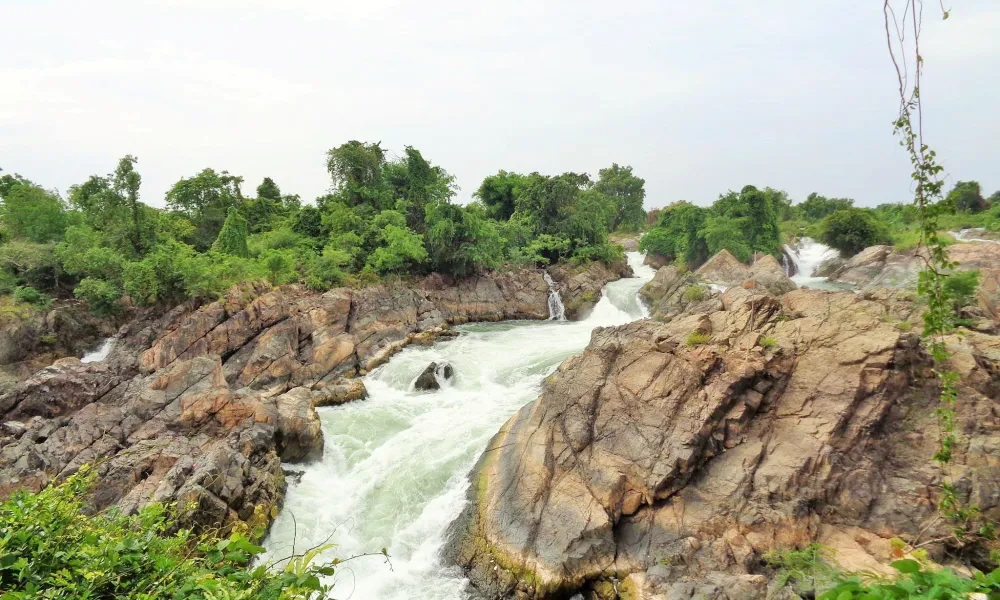
According to local belief, these tumultuous waters are a trap for malevolent spirits, hence their nickname Li Phi, which means "spirit trap" in Lao. Unlike Khone Phapheng, which is powerful and monumental, Tad Somphamit captivates with its more mystical dimension and trails lined with vegetation offering breathtaking viewpoints.
4. Tad Yuang Falls – The wild bolovens plateau cascade
Located in the Paksong district, about ten kilometres west of the town centre, Tad Yuang Falls, also called Tad Yeung, plunge powerfully from a height of about 50 metres into a natural basin enveloped in lush vegetation. The fall creates a cloud of sparkling mist, giving the place an almost unreal atmosphere, as if suspended between sky and earth.
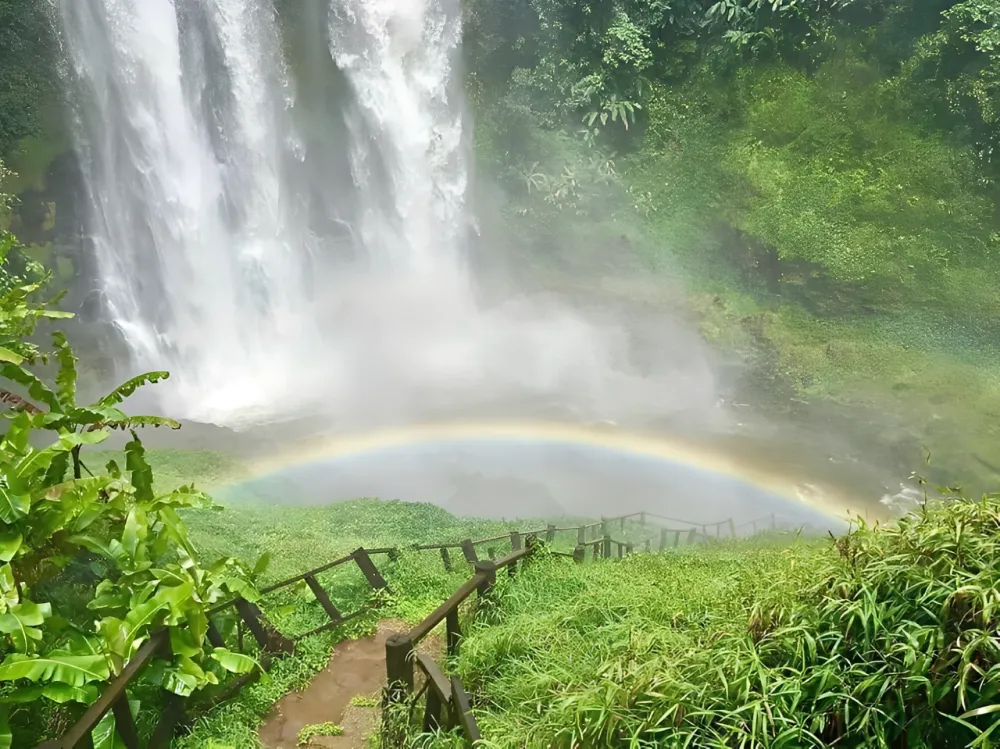
What makes Tad Yuang so special is its still-preserved character: here, nature reigns supreme. No excessive development, just the rumble of the water, the deep green of the Bolovens Plateau jungle, and the scent of the coffee plantations that surround the region. A true haven for those seeking an authentic and wild atmosphere, far from the crowds.
Surrounded by a dense and verdant forest, the area around the waterfall offers perfect resting spots where visitors can sit, relax, and contemplate the raw beauty of the location. The atmosphere is peaceful and refreshing, carried by the constant sound of the water and the coolness of the jungle. Another irresistible asset of Tad Yuang is the natural basin at the foot of the fall, where the water takes on a spectacular emerald hue. Many travellers come here to swim and cool off in this picture-postcard setting, making Tad Yuang one of the most appreciated waterfalls on the Bolaven Plateau.
5. Tad Fane Twin Falls – Vertical marvel of the bolovens plateau
Among the natural gems of Laos, Tad Fane stands out as one of the most impressive and photogenic waterfalls on the Bolovens Plateau in the south of the country. Located in the heart of the Dong Hua Sao protected area in Champasak province, this twin waterfall—about 120 metres high—plunges vertically into a deep gorge, enveloped by a vibrant green tropical forest. Seen from afar, Tad Fane resembles two ribbons of water suspended in the void, an almost unreal image that fascinates travellers in search of magnificent landscapes.
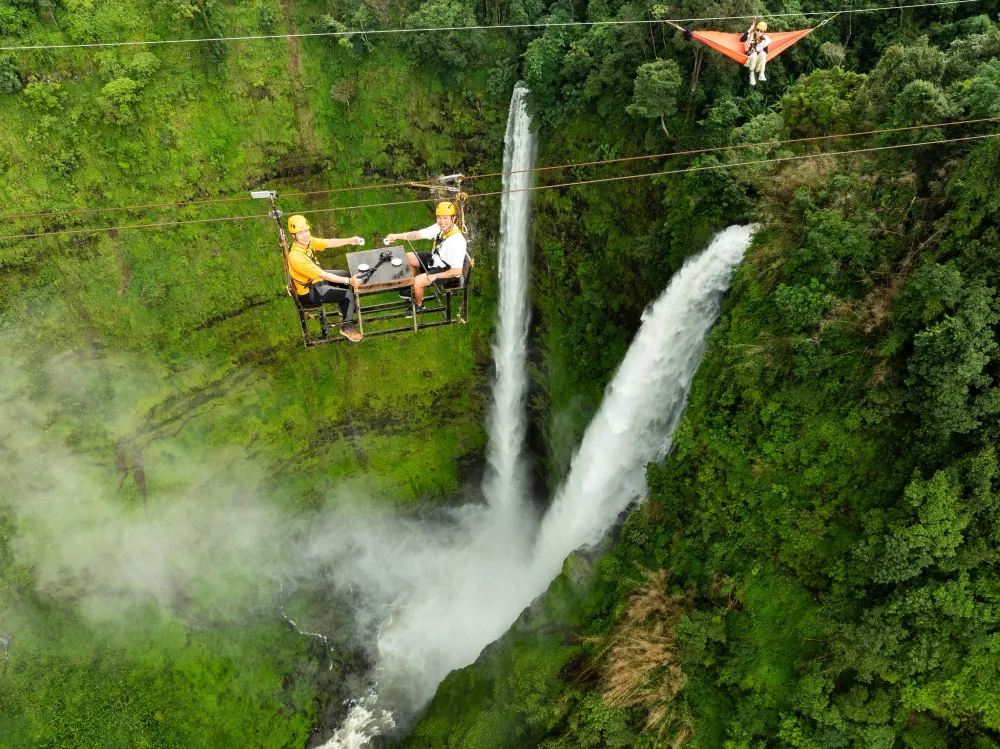
The most insane experience: sipping coffee suspended over the void
One of the most emblematic experiences at Tad Fane is undoubtedly the panoramic coffee spot suspended between two cliffs, with hammocks hung over the void. Sitting there, heart pounding, between vertigo and wonder, you watch the two roaring falls plunge into the jungle while the horizon is tinted with infinite green. A sensation that is both frightening and euphoric, unique to Laos—a "chill and unforgettable" moment that many consider one of the most beautiful travel memories of their lives.
6. Sae Pong Lai Falls – The mystical cascade of attapeu's edge
Nestled in the heart of the Xepian National Park, about 75 km from the Samakkexay district (Attapeu province), Sae Pong Lai Falls emerge from the waters of the Xepian River. With a height varying between 20 and 40 metres and a width of nearly 130 metres, it powerfully spills over a rock face, enveloped by a wild, deep green, and still very undeveloped landscape. The water, powerfully projected into a thick mist, offers a natural spectacle of striking intensity. It is considered one of the most impressive and still secret waterfalls in Laos.
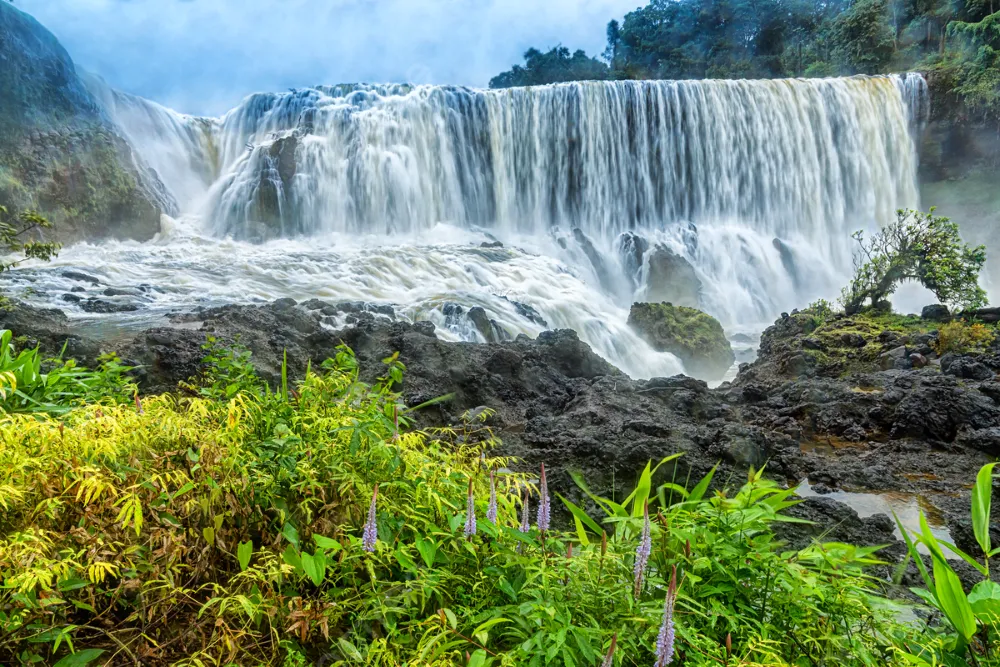
Unlike other emblematic sites in Laos, the history of Sae Pong Lai remains shrouded in mystery. No official document mentions its discovery or its role in local traditions. It is believed that the indigenous communities of the region have known it for generations, considering it both a vital source of fresh water and a sacred place where nature still speaks to the spirits. But Sae Pong Lai is not just for contemplation—it is also a playground for adventurers seeking thrills and raw nature.
7. Tad Lo Falls – Simple charm of the bolovens plateau
The site owes its name to a local legend: it is said that an elephant (Lo) fell from the cascade, giving the place both a poetic and sacred dimension. Unlike highly frequented places, Tad Lo captivates with its simplicity—no massive tourist structures, just the sound of the water, the laughter of children, and the smoke of cooking fires gently rising from the stilt houses.
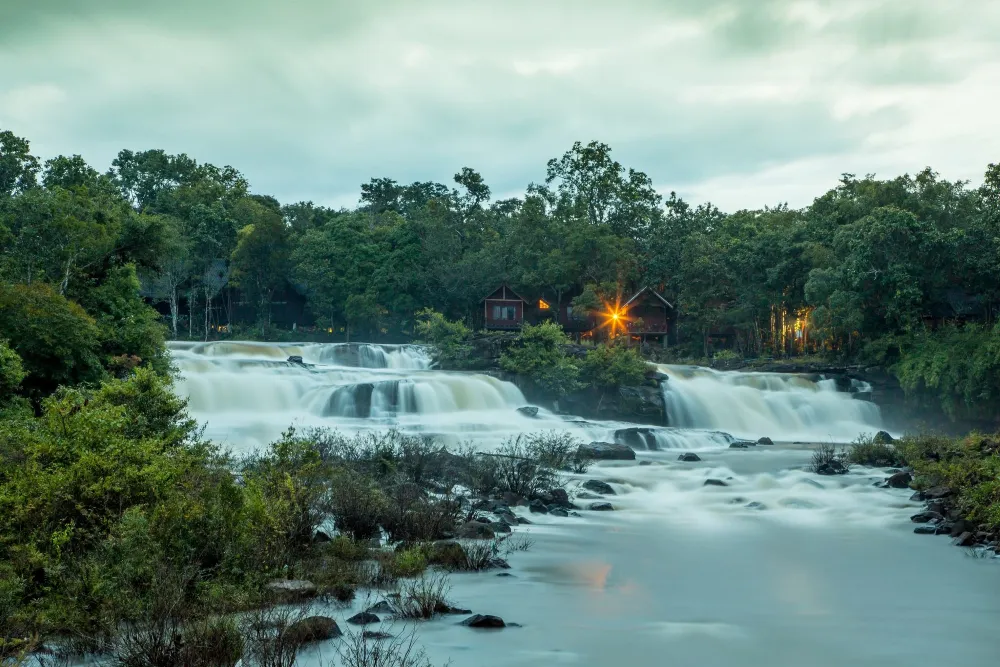
The region is inhabited by several ethnic groups of the Bolovens Plateau, notably the Laven, Katu, and Alak, whose daily life can be observed: stilt houses, traditional weaving, coffee drying in the sun... Staying in a small bamboo guesthouse by the water is a taste of a simple, rural, and sincere Laos—far from the classic tourist circuits.
8. Tad Thong Falls – Luang Prabang's secret getaway
Only a few kilometres from Luang Prabang, but much less known than Kuang Si, Tad Thong is a discreet cascade nestled in the heart of a tranquil forest path. Accessible via a small shaded hiking trail, the site maintains a wild and soothing atmosphere, ideal for those seeking to escape the crowds.
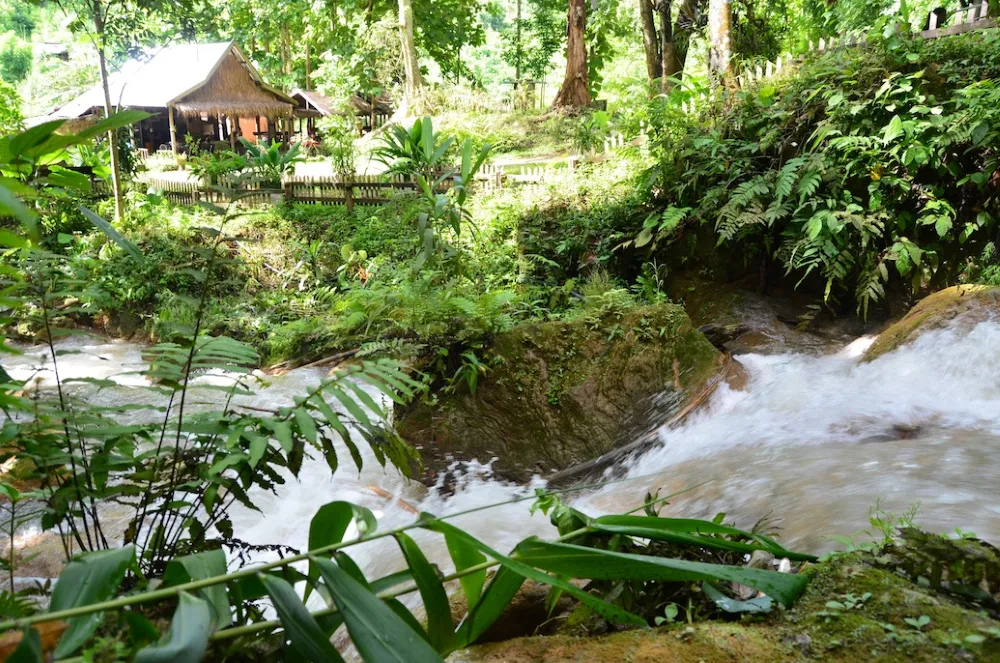
The water falls into several small natural pools, perfect for cooling off after the walk. The charm of Tad Thong lies in its simplicity: no massive tourist infrastructure, just the sound of the water and the lush vegetation. For travellers who love secret places and an "off the beaten track" atmosphere, Tad Thong is an intimate nature break, just minutes from the former royal capital.
9. Tad Sae Falls – The tranquil terraced pools
Located 15 km southeast of Luang Prabang, Tad Sae Falls are less known than Kuang Si, but they captivate with their tranquil charm and still-preserved natural setting. The water, a milky blue, flows gently over white limestone slabs arranged in terraces, forming pretty pools ideal for swimming. In places, the fall becomes livelier, then softens again, creating a soothing, almost hypnotic rhythm.
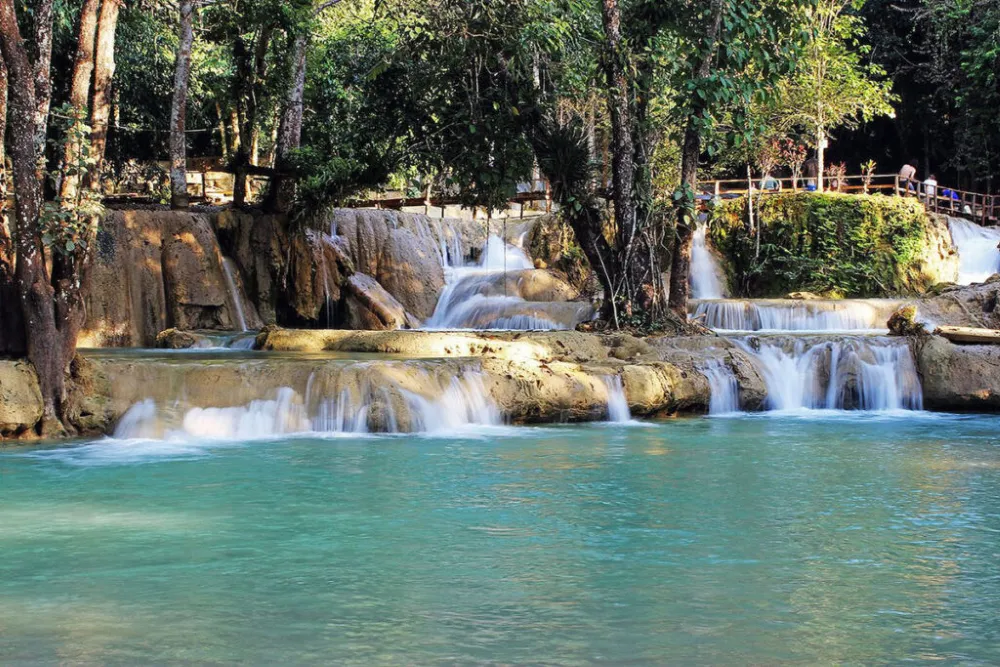
Access to Tad Sae is only by boat, making the experience even more exotic. The crossing in a traditional longboat allows for observation of local life along the shore—fishermen, buffalos resting in the shade, children playing in the water. Once there, visitors can swim, relax on the wooden platforms by the water, or simply enjoy the calm of the forest. In recent years, Tad Sae has also become a small activity centre with the possibility of meeting elephants, observing them, or even taking a short elephant ride—a memorable experience in the heart of Lao nature.
10. Tad Pha Suam Falls – The terrace waterfall and cultural stop
Located in the Champasak province, on the edge of the Bolovens region, Tad Pha Suam Falls have a unique charm. Its name literally means "terrace-shaped" in the local language, as the water spreads out in a wide natural curtain that gently flows over a circular basalt platform. Unlike the dizzying falls like Tad Fane, here the water does not plunge from a height but spreads out like a fan, creating a natural pool ideal for swimming and picnics.
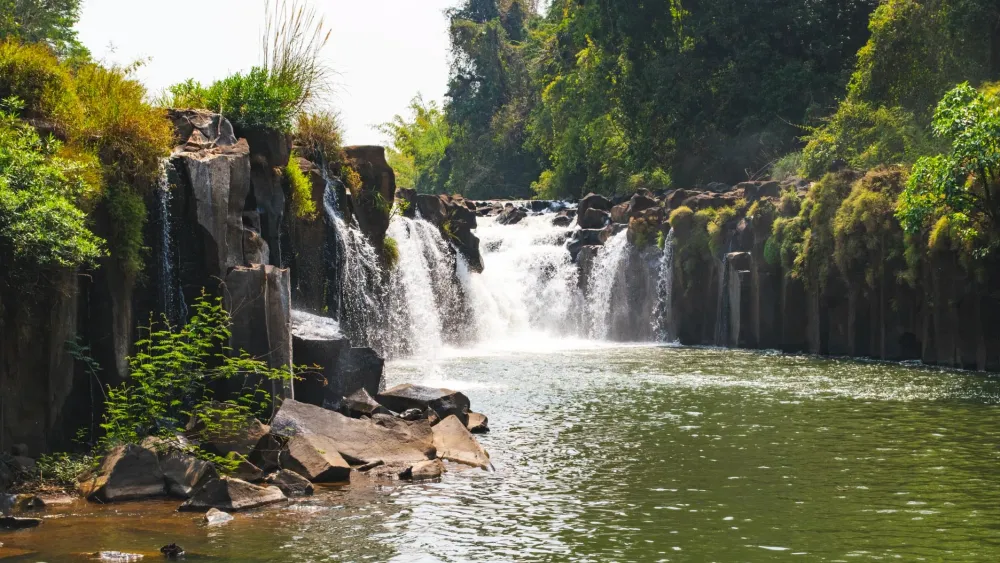
This site is close to small villages of the Laven and Katu ethnic groups, making it a perfect place to combine natural discovery with cultural encounter. Around the waterfall, you can find traditional wooden houses, weaving artisans, and medicinal plant gardens, reminding you that Tad Pha Suam is more than just a landscape—it's a living space. Easily accessible and open all year round, Tad Pha Suam is particularly appealing during the rainy season, when the water flow increases and the cascade takes on the appearance of a vast natural mirror surrounded by jungle.
11. Nam Kat Falls – Ecotourism and forest adventure
Located about 20 km northeast of Oudomxay, Nam Kat Falls are found in the heart of the Nam Kat Yorlapa ecotourism project, one of the most beautiful sustainable tourism models in Laos. To access it, visitors cross a forest adventure park before entering an area of unspoiled nature where the jungle reasserts its rights.
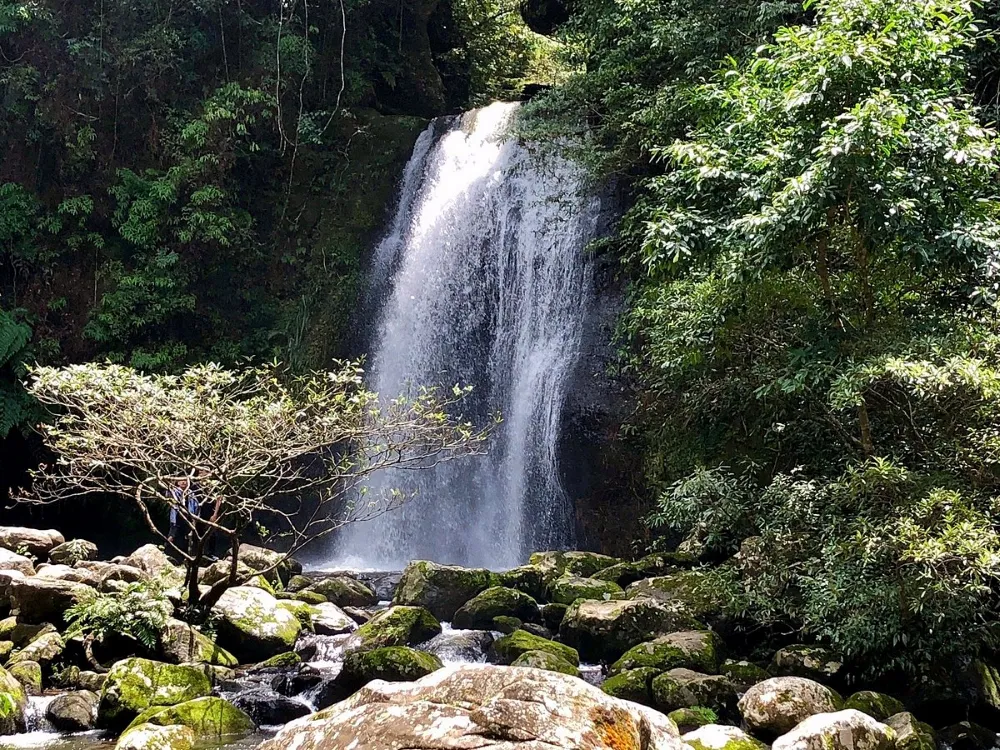
As you approach, the roar of the water becomes more present, like an invitation to enter the natural sanctuary of the cascade. Nam Kat then appears as a curtain of crystal-clear water sliding over dark rocks, enveloped in thick vegetation. When the sun's rays pierce the canopy and reflect on the moving water, the site transforms into a truly enchanted scene, bathed in a light mist that floats in the air.
Travellers can hike on the suspended walkways, swim in the natural pools, or simply sit and absorb the soothing silence of the forest. Here, every step seems to bring you back to the essential. But Nam Kat is more than just a waterfall—it is a symbol of conservation and responsible tourism. The Nam Kat Yorlapa project aims to protect the ecosystem, involve local communities, and offer environmentally friendly experiences. A slower, more conscious way to travel, in line with the deep nature of Laos.
12. Tad Champee Falls – Paksong's hidden gem
Nestled in the peaceful region of Paksong, Tad Champee Falls captivate travellers seeking natural beauty and authenticity. Surrounded by lush tropical vegetation, this cascade forms magnificent natural pools with clear waters, perfect for a refreshing swim. Here, time seems to slow down: the sound of the water mixes with the sounds of the forest, creating a peaceful, almost meditative atmosphere.
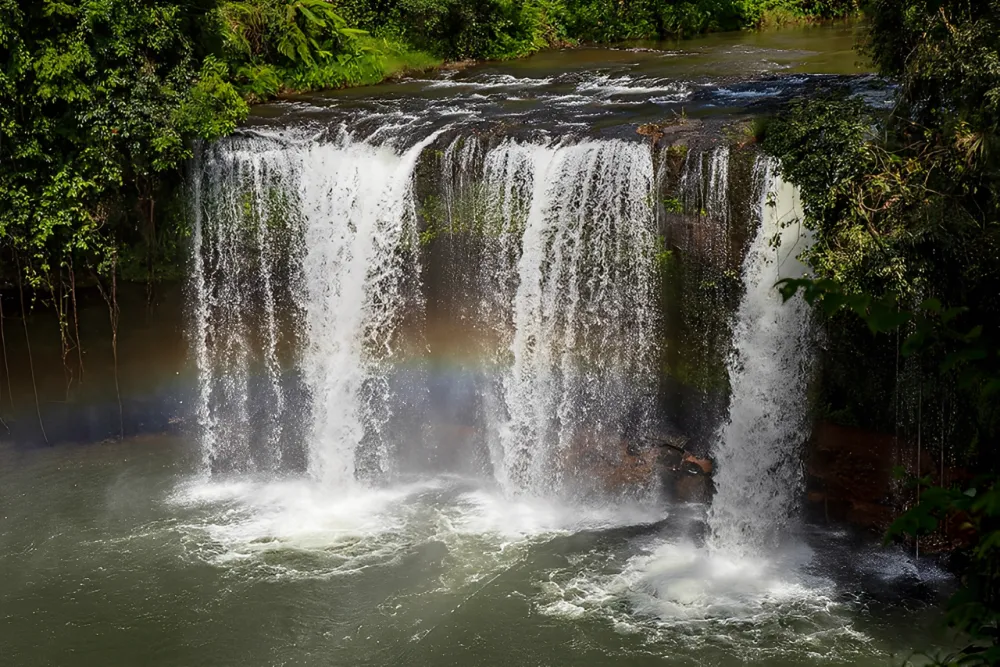
Access to Tad Champee requires a bit of effort—a dirt road crosses the jungle—but the reward is immediate: a photogenic waterfall, where the water slides in luminous ribbons under the sun's rays. The play of light on the water offers photographers and nature lovers scenes worthy of a postcard. Visitors can swim, picnic by the pools, explore the small surrounding trails, or simply settle in a quiet corner to enjoy the silence. The area also hosts abundant local fauna, ideal for bird watching and contemplating the biodiversity of the Bolovens Plateau.
Practical tips for visiting Laos waterfalls
Best season to visit
November to April (Dry Season): Ideal for swimming, with turquoise water and accessible trails.
May to October (Rainy Season): The falls are more powerful, but paths can become slippery—best for photographers and lovers of wild nature.
Bring cash
Many waterfalls require a small entrance fee (1 to 3 USD). Card or QR code payments are almost never available.
Suitable footwear and light clothing
Opt for non-slip sandals or light hiking shoes. Swimsuit + sarong or a quick-drying towel are highly recommended.
Respect nature and local communities
Do not leave any rubbish, even biodegradable.
In some areas (especially near ethnic minorities), avoid overly touristy poses or drones without authorisation.
Safety first
Do not swim in deep pools or those with strong currents (especially at Tad Fane, Nam Kat, Khone Phapheng).
Always follow marked trails—some waterfalls are isolated, and no rescue is available on-site.
Exploring the waterfalls of Laos is much more than admiring simple cascades—it is diving into the heart of a still-wild nature, vibrating to the rhythm of local legends, and feeling that rare sensation of absolute freedom. Whether you are a fan of spectacular landscapes, secret swims, or authentic encounters, these Laos travel gems will make your trip an unforgettable interlude.
See more:
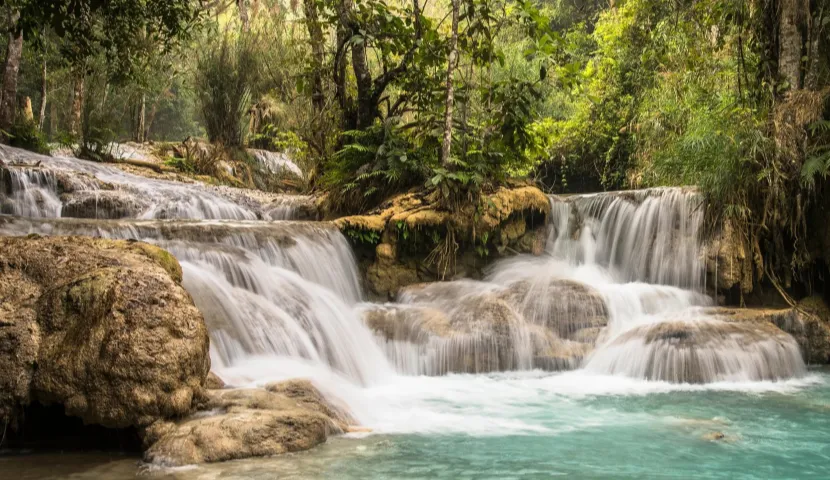






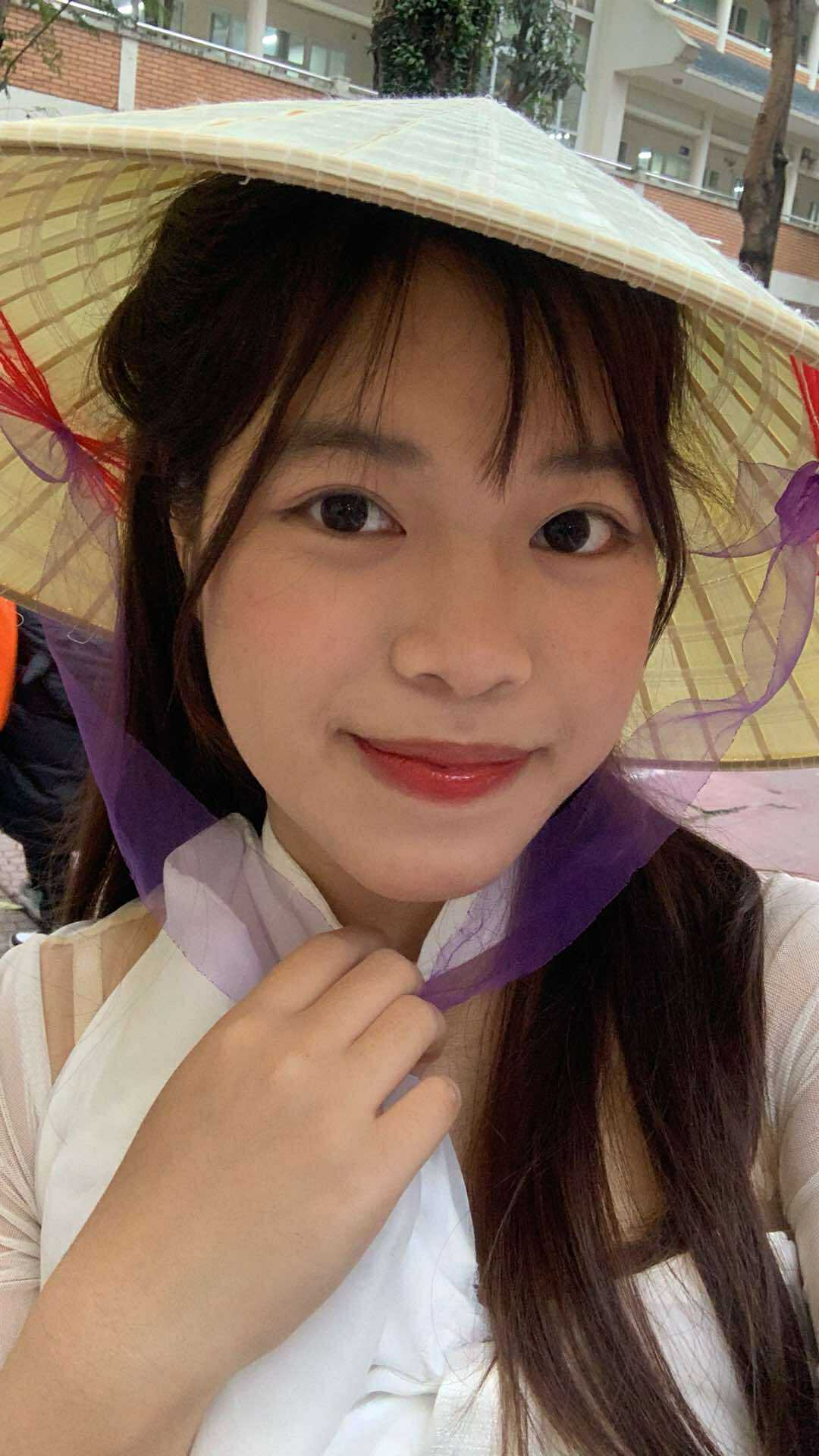
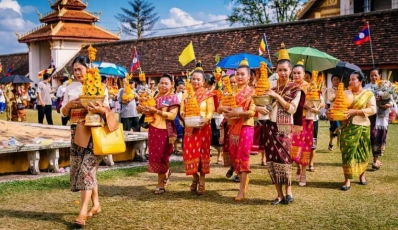
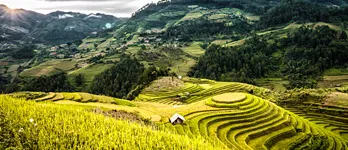
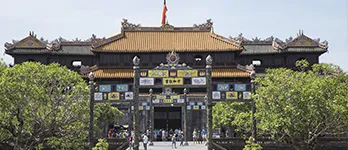
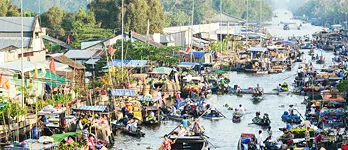

 TRAVELERS' CHOICE 2025
TRAVELERS' CHOICE 2025 